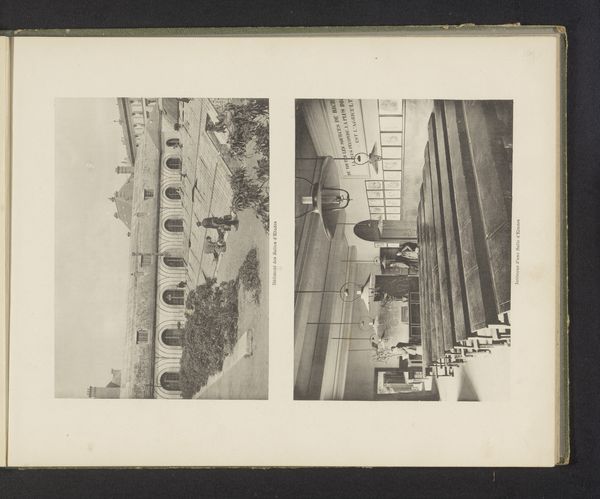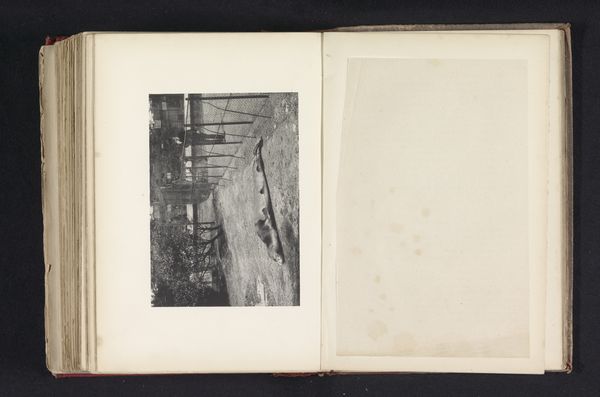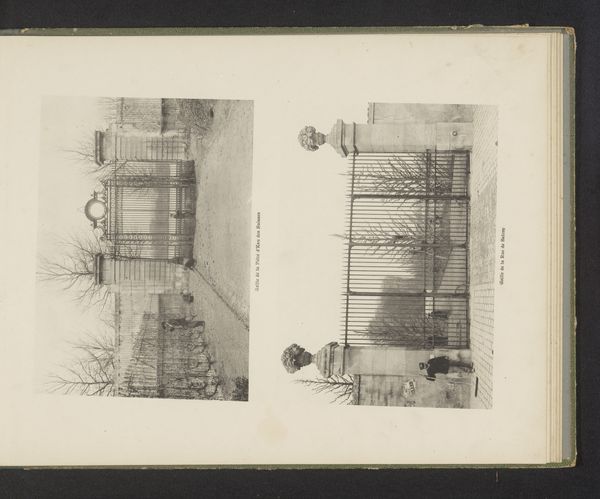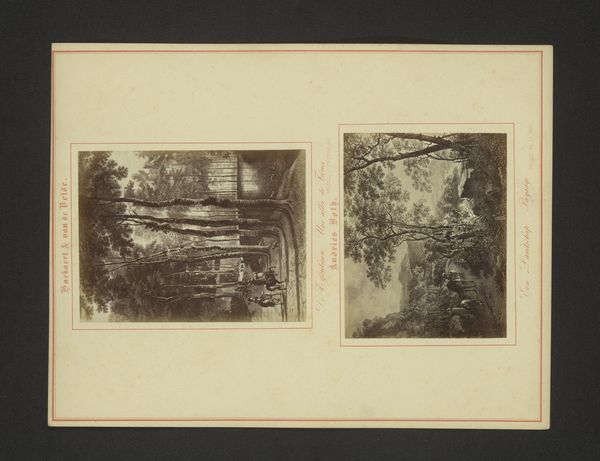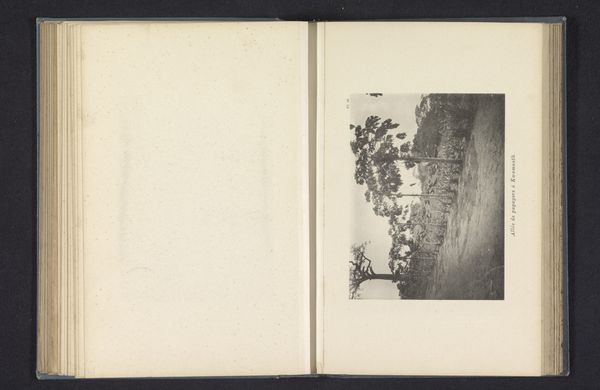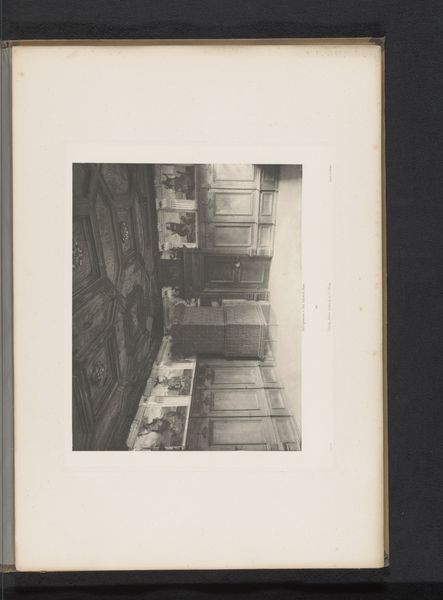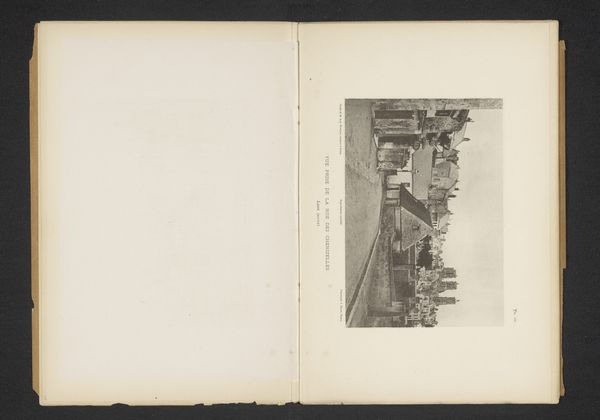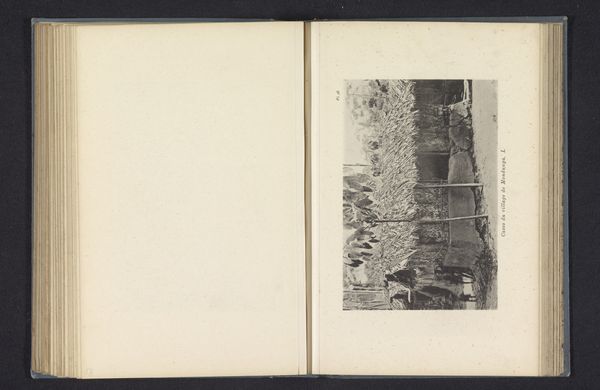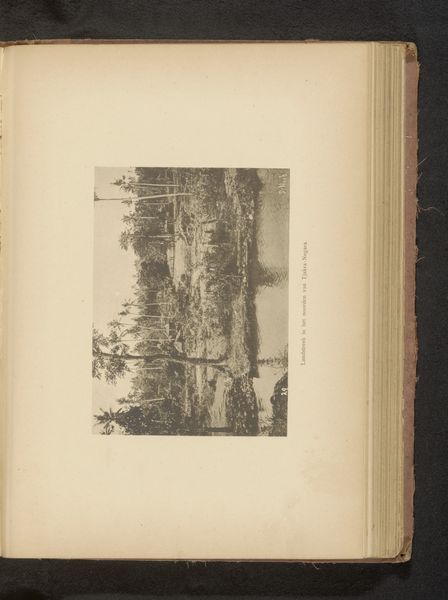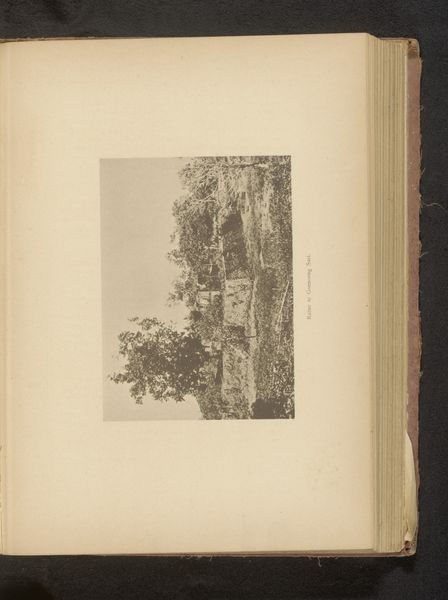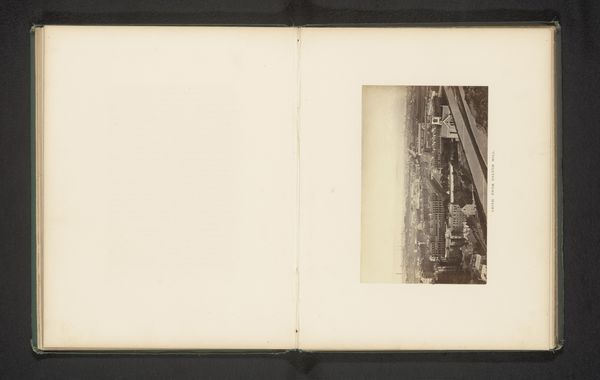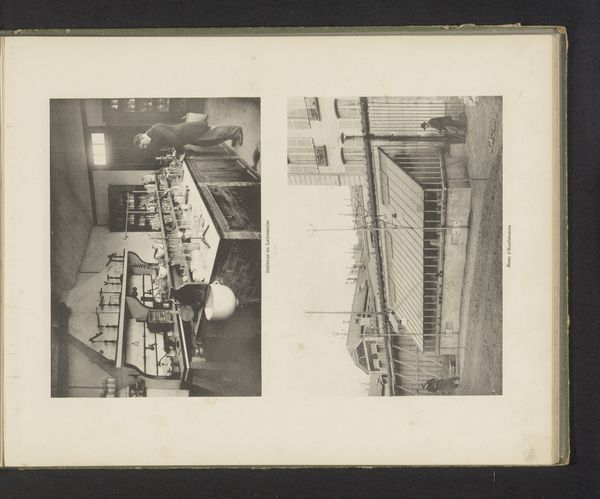
Twee gezichten op tuinen van de École Nationale Superieure d'Horticulture in Versailles, Frankrijk before 1900
0:00
0:00
print, photography, albumen-print
# print
#
landscape
#
photography
#
albumen-print
Dimensions: height 306 mm, width 241 mm
Copyright: Rijks Museum: Open Domain
Curator: Here we have "Twee gezichten op tuinen van de École Nationale Superieure d'Horticulture in Versailles, Frankrijk", an albumen print dating from before 1900, author unknown. What strikes you first about this dual image? Editor: It feels strangely desolate, despite the presence of human figures and the organized rows in the garden. The grey tones give it a very somber atmosphere. There is very little tonal variety and strong rectilinear geometries dominating both spaces. Curator: Indeed, let's unpack those geometries. The photograph presents two views. On the left, what appears to be a regimented orchard stretches toward the vanishing point, with human figures tending to the plants. The other image displays a classical building as a backdrop. This use of architecture certainly impacts its readability, don’t you think? Editor: Absolutely. Considering its socio-political context, the École Nationale Superieure d'Horticulture represented French agricultural progress and landscape design, where scientific practice informs artful design. It highlights the institution's dual role in teaching garden cultivation and agricultural practices. Curator: Observe how the use of light emphasizes the strict ordering of space and work, which certainly adds to this. This is emphasized by the vertical lines, created through compositional repetition. But one must ask, what does the strict geometry contribute to this work in the historical moment? Is the structure inherently political? Editor: Of course. The perfect rows and cultivated grounds were demonstrations of French achievement. Remember, Versailles, even in its ruined, post-Revolution state, carried tremendous symbolic weight and power. But to step away from our own poststructural interpretation, what does it tell us of the human figures in it? They feel dwarfed by the landscapes they maintain! Curator: Agreed, the visual dynamic evokes a sense of discipline, as you noted. I believe that it is impossible to detach the formalism of a photograph, no matter how unassuming, from the context that enables its production. And by all metrics this has the form of a document. It leaves so much unsaid… Editor: It invites reflection on how meticulously manicured gardens reflected a broader control—control over nature and, symbolically, control over society. Thank you for giving me the occasion to unpack its semiotic power. Curator: My pleasure; thank you for reminding me how intertwined form and function were even at the very dawn of serious architectural photography.
Comments
No comments
Be the first to comment and join the conversation on the ultimate creative platform.
